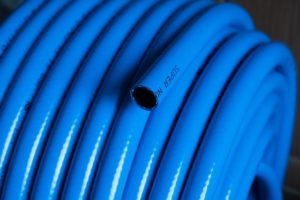
Having the appropriate measure of fuel inside ignition chambers of a vehicle is crucial in ensuring a vehicle runs accurately. A wide range of segments is there which are responsible for ensuring the fuel system is performing well. To let the gas from the fuel tank to the ignition chamber the fuel hoses should function well enough. These materials used to build oil hoses can be elastic, metal, or plastic. The more drawn out that a similar fuel line remains on the vehicle, the more a possibility that it should be supplanted. Whenever the vehicle wrenches and runs, the fuel hoses should need to transfer the fuel into the chamber of ignition.
The longevity of the hoses can be somewhere in the range of 10-50 thousand miles relying upon the material they are built. The assortment of metal in fuel lines will most likely withstand the brutal states of the motor a lot simpler than the elastic hoses will. Setting aside the effort for checking these hoses now and then can assist you with noticing repair issues before they become too huge of a problem. An appropriately functional fuel hose is essential in guaranteeing that the perfect measure of gas is conveyed to the ignition chamber.
Problems with the fuel system of your vehicle can be hazardous.Hence, appropriate repairing is significant. A flawed hose may prompt gas being apportioned close to the hot exhausting system and may result in burning. What you don’t need is putting yourself and your travelers in peril because of stalling on getting the fuel hoses supplanted.
Fuel or oil hoses are intended to transfer oil-based commodities, for example, fluid results of oil refining process (powers and oils primarily) yet additionally raw petroleum and semi-processed oil products of petroleum. Petrochemical items include several items like unrefined petroleum, heating oil, hydraulic oil, petrol, diesel oil, and greasing up oil, solidifying oil, machining oils, and emulsions, transformer oil, heat transfer oil, different sorts of solvents, black-asphalt emulsions, other fluid bituminous substances.
The hoses and hose congregations are utilized for the extraction and preparing of oil, exchange, stacking and emptying of fluid oil-based commodities (for example oil tankers in ports, tank trucks, rail tankers), oils and powers conveyance just as refuelling (for example oil siphon hoses, warming oil conveyance hoses), innovative procedures in industry, vehicle fuel frameworks, water driven establishments, and so on. While choosing the hose, think about the accompanying:
- its resistance from the particular substance of sweet-smelling hydrocarbons in the fuel
- Resistance from exceptional modern fuel additives and oil additives (unleaded fuel, transformer oils, biodegradable fuel)
- Any additional prerequisites concerning the security against static charges assemble (copper wire, conductive rubber, antistatic rubber), particularly in the explosive zones.
Conclusion:
Universally useful hoses for fuel and oil are made for fuel and installing oil in different vehicles and specialized hardware, low weight water powered frameworks, other mechanical applications. .The inward layer is made of NBR, Viton, PVC, NBR or other elastic mixes.


Leave a Reply